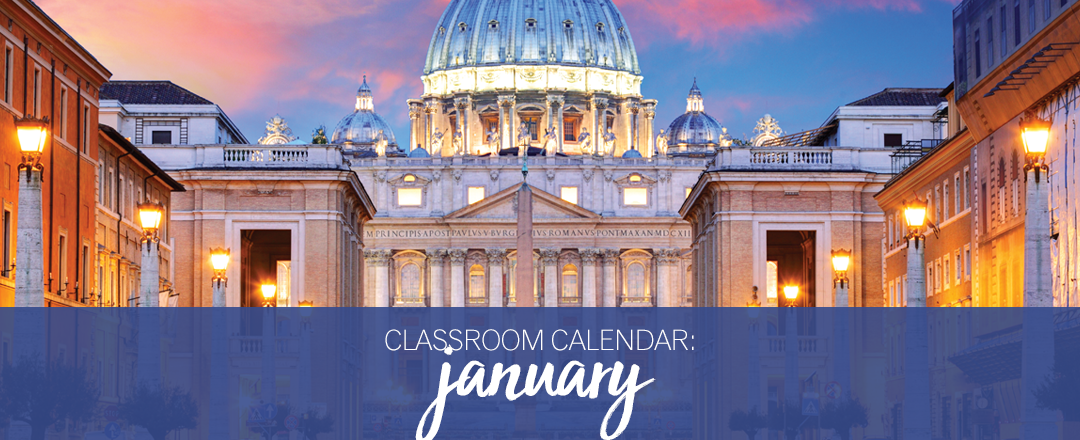Explorica is very proud of our new resource for teachers: our 2018-19 Around the World classroom calendar!
The calendar features a new country and an international holiday or event for you to celebrate with your students each month. Download a new page each month on this blog (and subscribe!), hang it up in your classroom, and talk to your students about how the holiday reflects the country’s history and culture.
This January, we’re featuring New Year’s Day. New Year’s Day is the first day of the Gregorian calendar, first adopted by Pope Gregory XIII in Rome in 1582. Pope Gregory created the calendar as a refined version of the Julian calendar by correcting the length of the year so the calendar could better predict the date of Easter. New Year’s was already the first day of the Julian calendar, and the day was dedicated to Janus, the god of beginnings (this is also where January gets its name).
Today, we celebrate New Year’s with countdowns, fireworks, sparklers, fun glasses frames, and much more—but there are many other customs depending on where you are in the world. Some celebrate with a polar bear plunge. In London, celebrants gather around the Thames to watch Big Ben strike 12. In Spain, celebrants try to eat 12 grapes at the stroke of midnight for good luck.
Questions to ask your students:
What are the difficulties involved in creating an accurate calendar?
Who celebrates the new year first, and who celebrates it last? Who doesn’t celebrate it on January 1?
What are your New Year’s resolutions? Did you keep the ones you made last year?
What is your family’s tradition for celebrating the new year? Do you do anything that might be unique to you?

